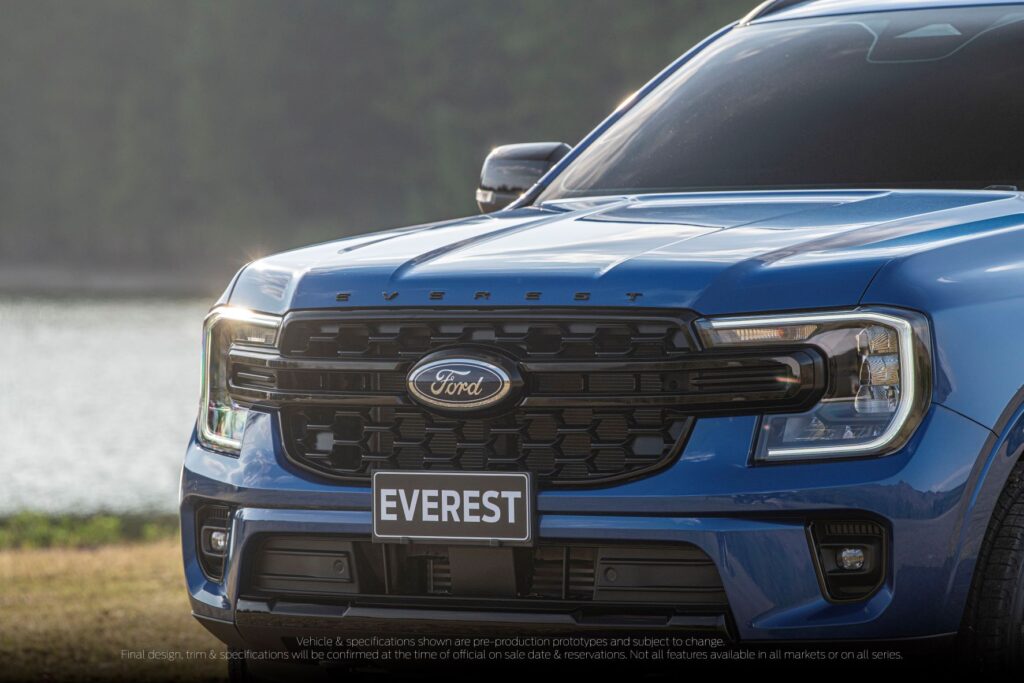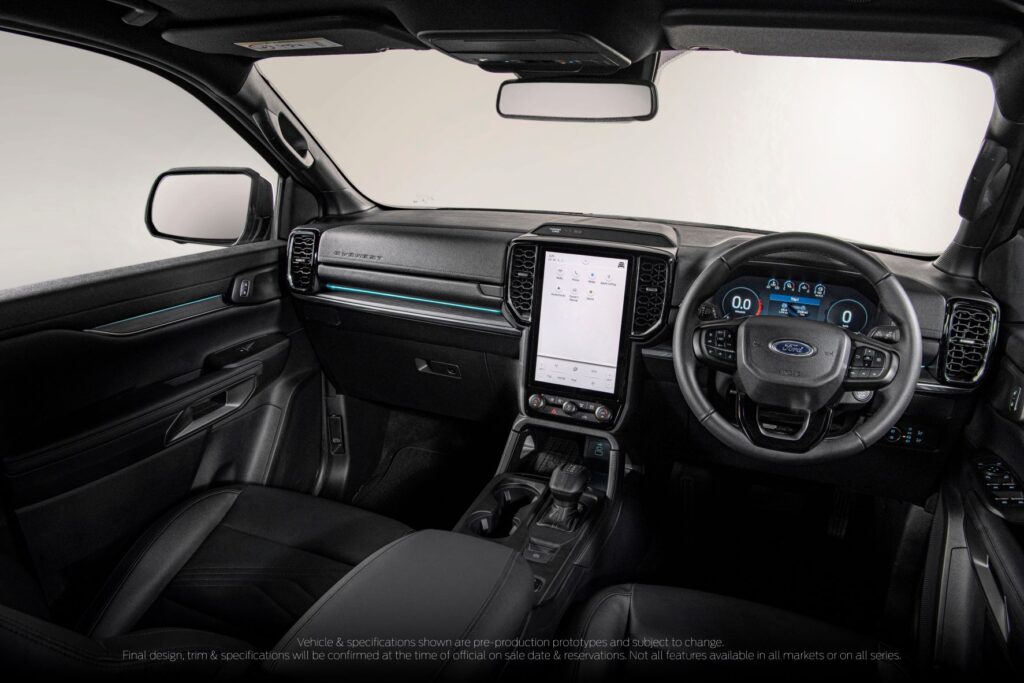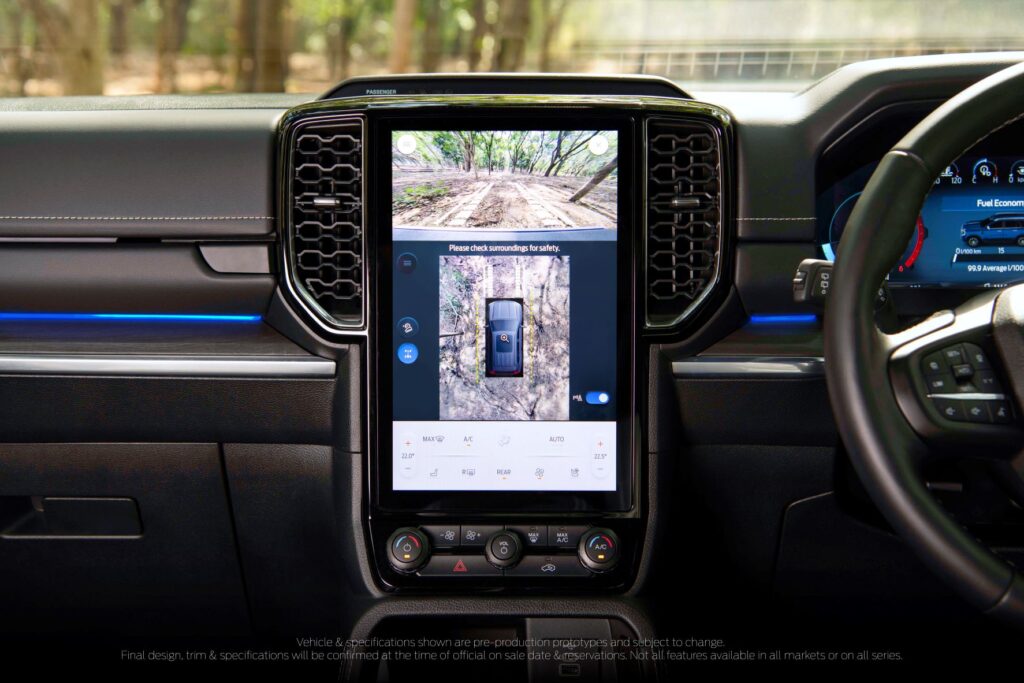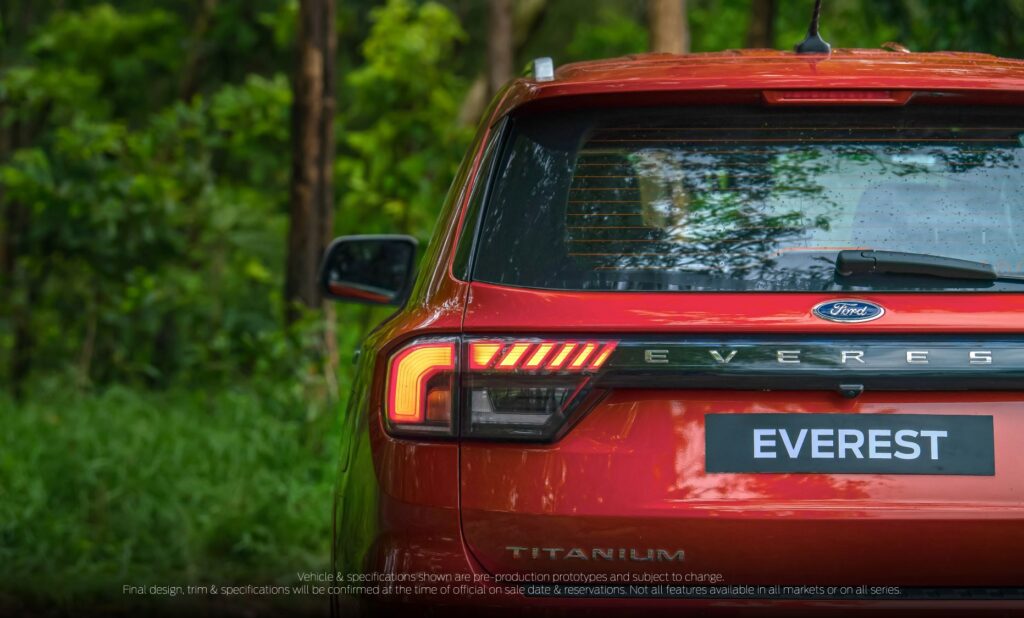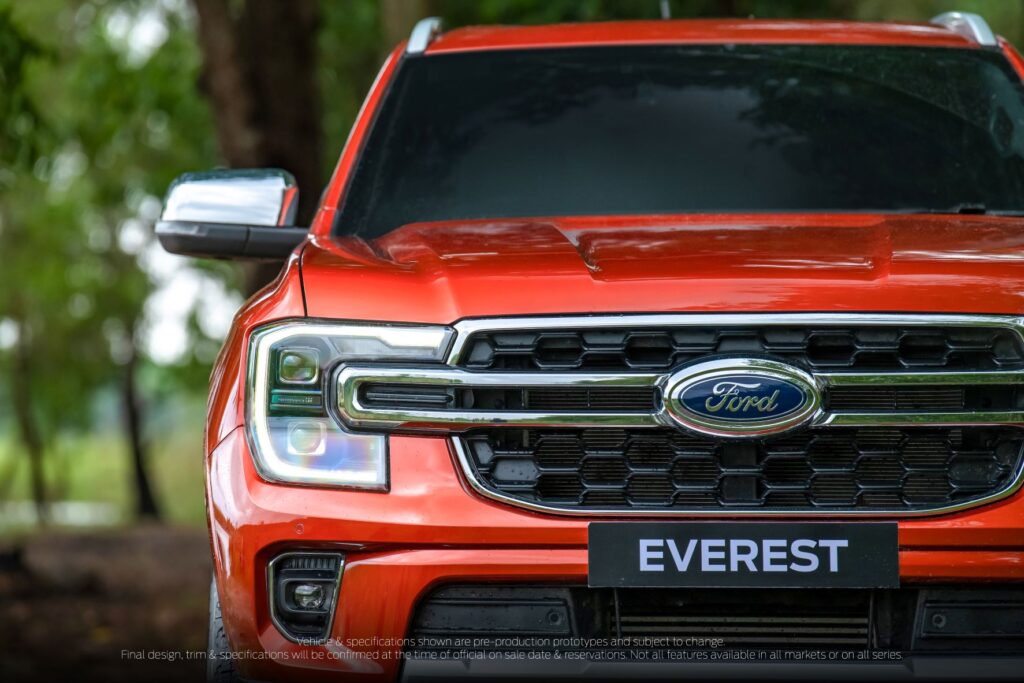Whether conquering off-road trails or city traffic, the next-generation Ford Everest’s driver assist technologies and safety systems are designed to help owners and their families explore with confidence.
From its ultra-strong safety cell to driver assist technologies to intelligent sensing systems, the next-gen Everest introduces new technologies that work alongside existing, enhanced driver aids to deliver a greater level of safety than ever before.
“Drivers told us that their number one concern was safety on the road,” said Stefan Seemann, driver assistance technology engineer for Ford International Markets Group. “Next-gen Everest gave us the opportunity to really look at ways we could help keep drivers and their passengers safer than ever before.”
More driver assist technologies
The next-gen Everest’s suite of driver assist technologies are designed to reduce stress behind the wheel and help keep drivers focused on the road ahead.
BLIS with cross-traffic alert and trailer coverage offers blind spot information system (BLIS) coverage for the Everest. Using sensors built into the taillights, BLIS can alert the driver when a vehicle in an adjacent lane is detected in the blind spot, which helps avoid collisions when switching lanes.
Cross-traffic alert warns of traffic approaching from the sides when the vehicle is in reverse, which helps when backing out of a driveway or parking spot.
Depending on the model, Everest features one of three versions of Ford’s adaptive cruise control system. adaptive cruise control with stop and go allows drivers to maintain a pre-set speed and distance from the car ahead and will even bring the car to a complete stop if required. ACC with stop and go and lane centering is able to detect lane markings and help keep the vehicle centered in the lane.
Lane-keeping system with road edge detection is designed to be used on rural roads from 65km/h and uses Everest’s wide-view camera located below the rearview mirror to monitor road edges 50 metres in front of the vehicle. Where a paved road becomes a soft verge, gravel hard shoulder or grass, the system provides gentle steering support as required to prevent the vehicle from drifting off the road.
Pre-collision assist with intersection has been enhanced for the next-gen Everest and uses camera technology to detect a potential collision with a vehicle, pedestrian or cyclist directly in front of the vehicle, and then alert the driver. If the driver’s reaction is not sufficient, automatic emergency braking (AEB) will pre-charge and increase brake-assist sensitivity to provide full response when you do brake. If you fail to react and a collision is imminent, the system can apply the brakes automatically to avoid or reduce the severity of the collision. AEB also has been enhanced with the ability to provide emergency braking support at an intersection, thanks to the addition of a new, wider camera.
Evasive steer assist (ESA) employs the same wide-view camera and radar sensor technology used by the pre-collision assist and AEB systems to help avoid collisions. If there’s enough distance between your vehicle and the vehicle ahead, and if a collision can’t be avoided by braking alone, evasive steer assist can help drivers to steer with less effort required by providing additional steering support.
Reverse brake assist helps drivers to reverse into parking spots and other tight spaces by providing audible and visual warnings. It can also detect a object behind the vehicle, such as a vehicle crossing, a cyclist or a pedestrian. The system even can bring the Everest to a complete stop if the driver doesn’t react in time.
Parking can be stressful, but with its new active park assist 2.0 feature, the Everest will guide itself into parallel or perpendicular spots with the press of a button. Ultrasonic sensors can detect an appropriate parallel parking space and autonomously steer the vehicle into the space, taking care of the steering, accelerator, gearshift and brakes. The driver can take over at any time by applying the brakes or taking their finger off the Active Park Assist button. The system also can drive you out. Simply activate the system and select N for neutral and active park assist will do the rest. Once the system drives the vehicle to a position where the parking space can be exited in a forward movement, a message appears instructing you to take full control of the vehicle. Combined with a 360-degree camera, rear camera, and front and rear parking sensors, the next-gen Everest has you covered.
Post-collision braking applies the brakes after a collision to reduce the risk of secondary collisions. The system automatically engages with moderate brake pressure when an initial collision is detected, potentially reducing the likelihood of a secondary collision, or injury to occupants or damage to the vehicle.
Model-dependent matrix LED headlights with glare-free high beam help stop Everest from dazzling oncoming traffic without the driver needing to dip the high-beam. Using a windshield-mounted camera to detect headlights or taillights ahead, the nine segments within the matrix headlights can be switched on and off to provide the best high-beam array for the driver without dazzling other road users. The headlights also offer dynamic and static bending capability and speed-dependent lighting, which can adjust the length of the light beam according to the vehicle’s speed.
Occupant protection systems include load limiting pretensioning driver, front passenger and outboard second row seatbelts, load-limiting front seatbelts, as well as up to nine airbags – dual front, dual front knee airbags, side and curtain airbags that cover up to the third row.
“Our team was focused on one goal – to make this Everest the safest we’ve ever created,” said Seemann. “From a more robust structure and chassis to new and innovative safety technologies, next-gen Everest is equipped to help reduce stress behind the wheel and help keep drivers focused on the road ahead.”
 Power Wheels Magazine A Notch Above
Power Wheels Magazine A Notch Above

